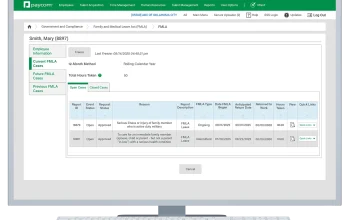Let’s be honest. Building a sales compensation plan for a traditional office is tricky enough. But when your team is scattered across time zones, working from home offices and coffee shops, the whole game changes. How do you keep everyone motivated, fairly paid, and rowing in the same direction when you can’t just pop over to their desk for a quick chat?
Well, it’s part art, part science. And getting it right is absolutely critical. A poorly designed comp plan can sink morale and drive your best reps out the virtual door. A great one? It becomes the engine of your growth.
Why Remote Sales Comp is a Different Beast
You can’t just copy-paste your old office plan. Remote work introduces a unique set of variables. For starters, you’re often hiring from a global talent pool, which means you’re navigating different costs of living. Should a rep in a major metropolitan area earn the same base as one in a smaller, more affordable town? There’s no easy answer.
Then there’s the visibility—or lack thereof. In an office, you get a feel for who’s grinding, who’s collaborating. Remotely, it’s easier for effort to go unnoticed, which can make a purely results-based plan feel… impersonal. You need a structure that rewards outcomes, sure, but also acknowledges the behaviors that drive those outcomes in a distributed setting.
Core Components of a Remote-Friendly Comp Plan
Every solid plan is built on a few key pillars. Think of these as the non-negotiables.
1. Base Salary vs. Variable Commission
This is the classic balance. A higher base salary (say, 60/40 split) offers stability, which is a huge perk for remote employees who might feel isolated from the company safety net. It attracts top talent and reduces financial anxiety. On the flip side, a more aggressive commission structure (like a 40/60 split) can supercharge motivation for your seasoned hunters.
The trend, honestly, is shifting towards a more balanced approach. In a remote world, you want your reps to feel secure enough to think strategically, not just panic-close.
2. Bonuses for More Than Just Closing
This is where you can get creative. Since you can’t see the daily grind, build incentives around the activities that lead to deals. Consider bonuses for:
- Activity Metrics: Scheduling a high number of qualified demos, logging accurate CRM data.
- Team-Based Goals: Hitting a team-wide quota fosters collaboration over internal competition.
- Strategic Objectives: Landing a key logo in a new vertical, or achieving high customer satisfaction scores post-sale.
3. Transparency and Clarity (No Fine Print!)
If a rep needs a spreadsheet and a law degree to understand how they get paid, you’ve already failed. Your plan must be crystal clear, easily accessible, and regularly communicated. Ambiguity breeds distrust, and in a remote setup, distrust spreads like wildfire.
Popular Sales Compensation Models to Consider
Okay, let’s get into the nitty-gritty. Here are a few common models and how they play out in a remote environment.
| Model | How It Works | Remote Team Fit |
| Straight Salary | Fixed pay, regardless of sales performance. | Rare for pure sales. Maybe for account managers focused on retention. |
| Base Salary + Commission | The classic. A guaranteed base plus a percentage of sales. | Excellent. Offers a safety net while rewarding performance. The most common choice. |
| Commission-Only | Income is 100% tied to sales results. | High risk, high reward. Can work for independent contractors or seasoned closers, but can lead to burnout. |
| Team-Based Commission | Commission is based on the performance of the entire team. | Very strong for remote. Promotes collaboration and knowledge sharing across the digital divide. |
You know, many companies are now blending these. A base + commission for individual performance, with a team-based bonus on top. It creates a powerful “we’re in this together” vibe.
The Global Compensation Conundrum
This is a big one. Do you pay everyone the same, regardless of location? Or do you adjust for local market rates? There are two main schools of thought.
Location-Based Pay: Salaries are tied to the employee’s local cost of labor. It can be more affordable for the company and seems “fair” from a local economics standpoint. But… it can also create a two-tiered system where remote employees feel like second-class citizens.
Single-Pay Structure: You pay the same rate for the same role, period. This is a powerful statement about equity and can help you attract incredible talent from anywhere. The downside? Your payroll costs will be higher.
There’s no universal right answer. You have to decide what aligns with your company’s values and budget.
Avoiding Common Pitfalls in Remote Sales Compensation
Even with the best intentions, it’s easy to stumble. Here are a few traps to watch out for.
Overcomplicating the Plan: If you have 15 different metrics and tiers that change every quarter, your reps will spend more time calculating their pay than selling. Keep it simple. Seriously.
Ignoring Non-Sales Activities: In a remote team, things like mentoring new hires, sharing best practices on Slack, or documenting processes are pure gold. If you only reward closed deals, these vital collaborative acts will dry up.
Setting and Forgetting: The market shifts. Your product evolves. Your comp plan can’t be a stone tablet. Review it quarterly. Get feedback from your team. Is it still driving the right behavior? Be prepared to pivot.
Final Thoughts: It’s About Fairness and Motivation
At the end of the day, a sales compensation plan for a remote team isn’t just a spreadsheet. It’s a core piece of your culture. It’s the primary way you communicate what you value. It signals trust—or a lack thereof.
The goal isn’t just to get people to sell more. It’s to build a cohesive, motivated, and fairly treated team that can win from anywhere. To create a system where success feels predictable and within reach, even when the next team member is a thousand miles away. That’s the real payoff.








